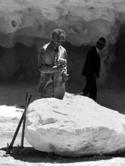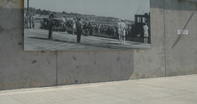Early Living Conditions of Prisoners

Conditions on Robben Island during the 1700s are difficult to ascertain because of the lack of documentation and the absence of any extant buildings, but one can only assume that life was no picnic. Most prisoners were forced to do hard labour on the island, quarrying stone or collecting shells.
Food supplies were always low and rations were puny, prompting several protests by prisoners. None of this could stop the constant yearning for freedom and several escape attempts were made over the years.
Indeed, many more people escaped from Robben Island than is generally acknowledged. Rowboats were occasionally stolen from the boathouse, and foreign ships would sometimes stop at the island illegally, hoping to pick up some additional crew members. Others may have even swum across the frigid channel to the mainland.
The Second Generation of Prisoners on Robben Island

The first generation of political prisoners on Robben Island were Cape Khoikhoi who opposed Dutch rule and exiled rebel leaders from other parts of the Dutch East India Company’s empire, such as Indonesia. The second generation were indigenous leaders from the Eastern Cape frontier who were captured and sent to the island, sometimes accompanied by their wives and children. The British were fighting with the locals on all sides of their expanding South African territory.
Accordingly, there were other political prisoners besides the Xhosa who spent time on Robben Island during the 1800s. Some Bushmen and Khoikhoi were sent there because of their role in the Bokkeveld Rebellion of 1824. The Zulu chief Langalibalele, head of the Hlubi tribe, was held on the island from 1874 to 1875 for his rebellion against the British forces in Natal.
The leaders of the Koranna Wars, who fought along the Orange River in 1870 and 1879, were also imprisoned for their refusal to honour Queen and Country- a saying that refers to loyalty and service given by a member of the British armed forces.
By David Fleminger